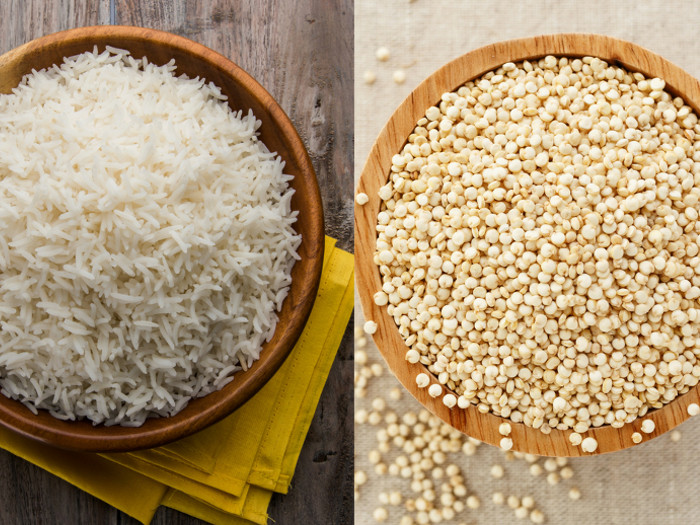There has long been a debate about quinoa vs rice, and while they have some similarities, there are also many important differences to note.
Quinoa vs Rice
There are numerous key aspects of quinoa and rice that differentiate them in our diet and cooking. Quinoa and brown rice are both whole grains, whereas white rice is far more different, nutritionally speaking. This article will primarily reference the difference between quinoa and brown rice.
Nutrition
Let’s take a look at how the two grains stack up against each other in terms of nutritional values.
- Carbs and Calories: When it comes to calories and total carbohydrate levels, these two varieties of whole grains are surprisingly similar. Quinoa and brown rice both have approximately 110 calories in a 1/2 cup, and they offer 20 grams and 22 grams of carbohydrates.
- Protein and Dietary Fiber: Quinoa is superior to brown rice in both its protein and dietary fiber content, boasting 4 grams of protein and 2.5 grams of fiber per serving, which is 20-30% higher than those nutrients in brown rice. [1]
- Iron and Magnesium: Quinoa is also a better option when it comes to iron and magnesium, although brown rice has a wider variety of minerals and higher levels of selenium and manganese. [2]
- Vitamins: When it comes to vitamins, the most notable are B-vitamins, of which these two grains have similar levels.

Which one would you pick? Photo Credit: Shutterstock
Taste
In terms of taste, quinoa and brown rice both have a slightly chewy flavor. Although there is a slight difference as discussed below.
- Quinoa is more neutral, making it easier to add to meals without changing the flavor.
- Brown rice has a forward, nutty flavor that is hard to miss in some recipes.
Health Benefits
Both of these whole grains are good sources of minerals, dietary fiber, and proteins, but they are relatively low in calories.
- Quinoa and brown rice help control diabetes and improve digestive efficiency, particularly because they are both gluten-free. [3] [4]
- Quinoa is a complete protein, whereas brown rice is not, but both can contribute to growth and development.
- Both grains can help prevent weight gain, among others.
- Both of these have a lower glycemic index than white rice, making them valuable for those at risk of diabetes. [5]
Uses
- The uses of quinoa and brown rice are quite similar, and they are two of the most common substitutes for white rice in a dish when someone wants to improve the overall nutritional value of their meal.
Substituting Quinoa for Rice
You can easily substitute quinoa for brown rice, as well as basmati rice and other whole grains, and while the flavor may differ slightly, the impact on recipes is minimal.
